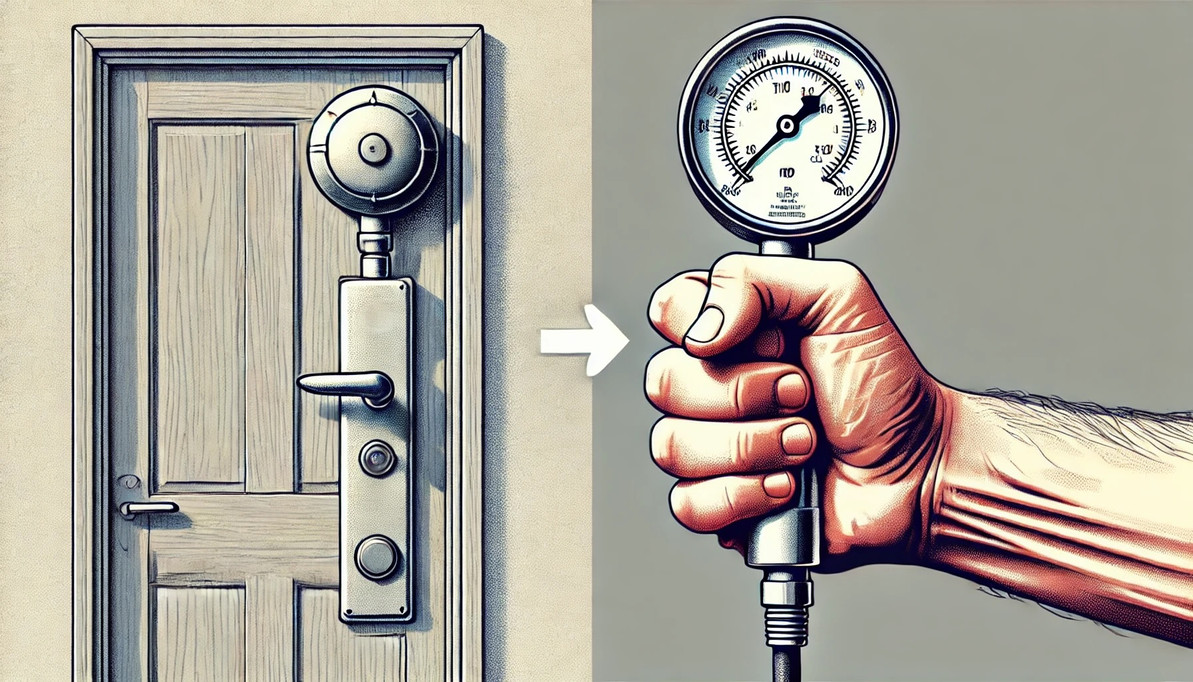Comprehensive Evaluation of Hand and Wrist Strength: The Role of Hand and Wrist Dynamometers
When assessing upper body strength, particularly in the wrist, forearm, and hand, two essential tools stand out: the hand dynamometer and the wrist dynamometer. These devices are commonly used together in physical therapy, occupational therapy, and clinical settings to provide a comprehensive evaluation of a patient's wrist and hand strength. This post explores how grip strength tests and forearm and wrist strength testing complement each other, offering professionals valuable insights into patient care and rehabilitation.
How Wrist and Grip Strength are Interconnected
Wrist strength and grip strength are closely related because the muscles and tendons that control the wrist and fingers work together to produce grip force. Here’s how they connect:
- Shared Muscles: Many of the muscles that control grip strength originate from the forearm and cross the wrist joint. Muscles like the flexor digitorum profundus and flexor digitorum superficialis are responsible for controlling finger movements while also contributing to wrist stability.
- Wrist Stability: A stable wrist is crucial for generating effective grip strength. Weak or unstable wrists can diminish the efficiency and power of the grip. Strong wrist extensors and flexors help maintain a neutral wrist position during gripping tasks, optimizing force production in the hand.
- Synergistic Action: When gripping, wrist strength is required to stabilize the wrist in various positions such as extension, flexion, or neutral. Without sufficient wrist strength, the fingers cannot exert maximum force, reducing grip strength.
- Rehabilitation and Exercise: Many exercises aimed at improving grip strength, like wrist curls and reverse curls, simultaneously target wrist strength. Similarly, grip exercises such as using hand grippers or squeezing stress balls engage wrist muscles as well, showing the strong synergy between these two areas.
In short, strong wrists provide the stability and support necessary for maximum grip strength, while a strong grip enhances wrist function, making the two inseparable in terms of rehabilitation and evaluation.
Understanding the Hand Dynamometer and Grip Strength Tests
A hand dynamometer—also known as a hand grip dynamometer—measures hand grip strength. During a grip strength test, the patient squeezes the dynamometer as hard as possible, and the device measures the maximum force exerted. These tests are essential for physical therapists, occupational therapists, and healthcare professionals to assess hand function, monitor muscle recovery, and gauge overall upper body strength.
Grip strength is vital for many daily tasks such as lifting, holding, and fine motor activities like opening jars. By assessing grip strength, professionals can:
- Identify areas of weakness
- Track rehabilitation progress
- Develop personalized treatment plans for patients
The Wrist Dynamometer and Forearm Strength Testing
While grip strength is crucial, wrist strength also plays a pivotal role in upper limb functionality. A wrist dynamometer is a specialized tool for forearm and wrist strength testing, measuring the strength of wrist muscles during movements like flexion, extension, abduction, adduction, and forearm rotation (supination and pronation).
Wrist strength testing is important for identifying issues with wrist mobility and stability, which are essential for transferring force from the forearm to the hand. A wrist dynamometer helps healthcare providers to:
- Assess muscle recovery in the wrist and forearm
- Evaluate wrist strength in patients recovering from injuries, surgeries, or conditions affecting wrist mobility
How Hand and Wrist Dynamometers Work Together
The hand dynamometer measures grip strength, while the wrist dynamometer evaluates wrist and forearm strength and mobility. Together, these tools provide a complete picture of upper limb strength, offering deeper insights into how the hand, wrist, and forearm interact.
For instance, a patient recovering from a wrist injury may regain significant hand grip strength. However, if wrist strength is not fully restored, they may still experience difficulties performing daily tasks. By using both tools, therapists can better understand the relationship between hand and wrist strength, leading to more tailored and effective treatment plans.
Who Uses Hand and Wrist Dynamometers?
Physical therapists, occupational therapists, sports trainers, and rehabilitation specialists regularly use hand and wrist dynamometers to assess patient strength and recovery. These tools are essential for evaluating muscle function and creating individualized rehabilitation plans for patients recovering from injuries or surgeries affecting the hand and wrist.
The Importance of Hand and Wrist Strength Testing
Assessing hand and wrist strength is crucial for patients aiming to regain functional independence. Regular testing using both a hand dynamometer and a wrist dynamometer helps track patient progress over time, ensuring that therapeutic interventions are effective and appropriately targeted. Incorporating these tests into treatment plans enables professionals to:
- Identify weaknesses or imbalances
- Tailor exercises to strengthen specific muscles
- Monitor patient improvement
- Adjust treatment strategies as needed
Conclusion
The combination of hand dynamometers and wrist dynamometers offers a comprehensive assessment of upper limb strength. By using grip strength tests and wrist and forearm strength testing together, healthcare professionals gain valuable insights into patient conditions, allowing for more effective treatments. These tools are indispensable for improving patient outcomes, especially in rehabilitation settings where strength and function are key to recovery.
Whether used in clinical assessments, rehabilitation, or research, hand grip dynamometers and wrist dynamometers form a powerful duo, helping patients regain strength and functionality in their everyday lives.
Recent Posts
-
The Kinetic Chain and Its Importance?
The kinetic chain is a key principle in physical therapy, referring to the way muscles, joints, and …Apr 18th 2025 -
How Occupational and Hand Therapists Perform Initial Hand Function Evaluations
When a patient begins hand therapy—whether recovering from an injury, surgery, or neurolo …Apr 6th 2025 -
What to Expect During Hand Therapy: A Guide for Patients and Caregivers
If you’re starting hand therapy—whether after surgery, a stroke, or a neurological …Apr 6th 2025



